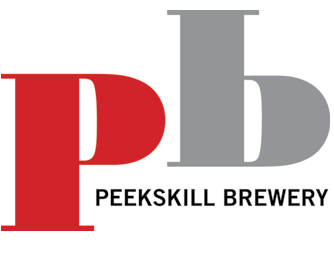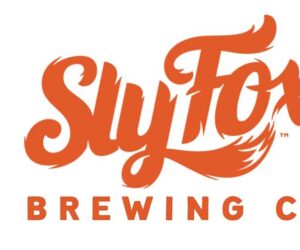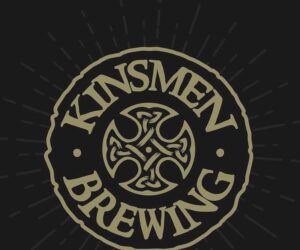Peekskill Brewery’s Malt Balls Brown Ale: Replicator
Dear Replicator, We don’t really have a homebrew club where I live, but there are about six to eight of us who get together once a month to taste our homebrews. This usually includes a commercial bottle sharing if people have a new beer to sample. Last month a growler of Peekskill (New York) Brewery’s Malt Balls Brown Ale was brought by one of the guys who had been down to New York City. None of us had thought much about brown ales before but this one was much different with nice bitterness and great hop aroma too. A couple of us are hoping to try to brew it. Can you get the recipe and give us some pointers?
James Toliver
Springfield, Massachusetts
During my phone interview with Peekskill Brewery Owner Keith Berardi he told me that his whole brewpub/restaurant odyssey began with a cross country trip he made in 2001. He was only 17 at the time but
at well over 6 feet (1.8 m) tall and 200+ lbs. (90+ kg) he appeared much older. This allowed him to purchase a growler of craft beer at a brewpub in Colorado. Needless to say, he discovered beer could have real flavor and he was hooked.
His second epiphany happened at the famous Magnolia Brewpub Bistro in the Haight Ashbury neighborhood of San Francisco. It was there Keith found that along with great craft beer you could have excellent food and great service. All the employees knew every detail about the beers and were well versed on the food preparation too.
The thought of opening his own combination brewery restaurant was always in the back of his mind. His
Italian heritage had influenced his desire for cooking and he became what he termed “a real foodie.” He said his uncles had always had wine presses in their basements and this prompted him to do some dabbling in homebrewing.
Soon he began to develop a business plan modeled after the Magnolia. His home area of the Hudson Valley in New York seemed to be the ideal location. His sister, Morgan, had been in the restaurant industry in Las Vegas so partnering seemed a good fit. A small building was located in downtown Peekskill. The 3,500-square-foot size wasn’t ideal but it would be a start. A 3.5-barrel system was purchased and shoehorned into a small space next to the kitchen. “People would wonder how we were even able to brew beer in there,” Keith recalled. They opened in the summer of 2008 with three house beers and several guest taps. It became apparent that their business model was a success as the first weekend they sold all of the beer they had produced.
It only took three years to outgrow the small location. A circa 1920, 14,000-square-foot, four floor field stone building became available and they made the move with an opening just before Christmas of 2012. A regionally famous brewer from Ithaca Brewing, Jeff O’Neil, was hired to develop solid recipes and brew them on a new, custom-designed 15-barrel system. The most unique part of this system was the inclusion of a 25-barrel “coolship” on the third floor.
In March of 2015 Jeff left to work on opening his own brewery in Rockland, New York. He passed the Head Brewer’s boots off to a very capable Matt Levy. Matt had been hired in August 2014 and worked closely with Jeff to learn the system. He had previous brewery gigs at Jolly Pumpkin Brewery and 2 1⁄2 years at Captain Lawrence Brewery. Also an avid homebrewer, he has applied some tweaks to the beers based upon his homebrewing recipes.
Matt became exposed to great craft beer when he enrolled at the University of Michigan. Michigan was far ahead of his home state of New York in the number of breweries and brewpubs. His major had been in history but he told me “many times during history classes I would be in the back reading brewing books.” It seems that the University of Michigan library had a very good selection since Michigan had a long history of famous old breweries.
Now Matt works closely with his Assistant Brewer Ben Petersen. Ben began working to expand their limited distribution within New York State. Also a homebrewer, he brought in some of his beers for Matt to sample and he was transferred to the brewhouse.
In discussing their brown ale, Matt describes it as a pumped up American brown. It is decidedly hop-forward and darker than your average brown ale. The unique character is developed with a high percentage of Briess Midnight Wheat and lots of late hopping. The coolship is responsible for most of the hopping. It isn’t used primarily for its original purpose – wort cooling and spontaneous fermentation. Instead, the boiled wort is pumped up to the third floor coolship, which is loaded with hops. The wort is cooled somewhat during the transfer. When it hits the hops it is far less than boiling. This allows for great extraction of the volatile oils and very little aroma loss. After sitting on the hops for a short period of time it is then routed back downstairs, through the heat exchanger and into a waiting fermenter. His advice for the homebrewed version, with all late hopping, most closely duplicates this technique.
James, you won’t have to count on a friend to bring back Malt Balls Brown Ale because now you can “Brew Your Own.” For more information about Peekskill Brewing Co. and their other fine beers visit them on the web at www.peekskillbrewery.com or call the brewery at 914-734-2337.
Peekskill Brewery’s Malt Balls Brown Ale clone
(5 gallons/19 L, all-grain)
OG = 1.064 FG = 1.013
IBU = 51 SRM = 22 ABV = 6.7 %
Ingredients
10 lbs. (4.5 kg) Maris Otter pale malt
2 lbs. (0.91 kg) Briess aromatic malt (20 °L)
15 oz. (0.42 kg) flaked barley
5 oz. (0.14 kg) Briess Midnight Wheat malt (550 °L)
22.4 AAU Centennial hops (15 min.)
(2 oz./57 g at 11.2% alpha acids)
11.2 AAU Centennial hops (5 min.)
(1 oz./28 g at 11.2% alpha acids)
11.2 AAU Centennial hops (0 min.)
(1 oz./28 g at 11.2% alpha acids)
1⁄2 tsp. Irish moss (15 min.)
1⁄2 tsp. yeast nutrient (10 min.)
White Labs WLP001 (California Ale), Wyeast 1056 (American Ale), or Safale US-05 yeast
3⁄4 cup corn sugar (if priming)
Step by Step
This is a single step infusion mash. Mix all of the crushed grains with 4.6 gallons (17.4 L) of 156 °F (69 °C) water to stabilize at 145 °F (63 °C). This is a medium thin mash using 1.4 quarts (2.9 L/kg) of strike water per pound of grain. This ratio will help to increase maximum fermentability. A more fermentable wort is also created by the low mash temperature. After 90 minutes, check to be sure starch conversion is complete. When complete, slowly sparge with 170 ºF (77 ºC) water.
Collect approximately 6 gallons (22.7 L) of wort runoff. Boil for 60 minutes, adding the hops, Irish moss, and yeast nutrient as per the schedule. During the boil, use this time to thoroughly sanitize your fermentation equipment.
Cool the wort to 75 ºF (24 ºC). Pitch your yeast and aerate the wort heavily. Allow the beer to cool to
68 ºF (20 ºC). Hold at that temperature until fermentation is complete. This may take 6–8 days. Gently transfer to a carboy, avoiding any splashing to prevent aerating the beer. Allow the beer to condition for an additional week. Prime and bottle condition or keg and force carbonate to 2.4 volumes CO2. Allow the beer to age for at least 2 more weeks to fully develop the flavors and enjoy your Malt Balls Brown
Ale clone.
Peekskill Brewery’s Malt Balls Brown Ale clone
(5 gallons/19 L, partial mash)
OG = 1.064 FG = 1.013
IBU = 51 SRM = 22 ABV = 6.7 %
Ingredients
6.6 lbs. (3 kg) Muntons Maris Otter unhopped liquid malt extract
1 lb. (0.45 kg) Maris Otter pale malt
2 lbs. (0.9 kg) Briess aromatic malt (20 °L)
15 oz. (0.42 kg) flaked barley
5 oz. (0.14 kg) Briess Midnight Wheat malt (550 °L)
25.2 AAU Centennial hops (15 min.)
(2.25 oz./64 g at 11.2% alpha acids)
14 AAU Centennial hops (5 min.)
(1.25 oz./35 g at 11.2% alpha acids)
11.2 AAU Centennial hops (0 min.)
(1 oz./28 g at 11.2% alpha acids)
1⁄2 tsp. Irish moss (15 min.)
1⁄2 tsp. yeast nutrient (10 min.)
White Labs WLP001 (California Ale), Wyeast 1056 (American Ale), or Safale US-05 yeast
3⁄4 cup corn sugar (if priming)
Step by Step
Steep the milled grain in 2 gallons (7.5 L) of water at 145 ºF (63 ºC) for 90 minutes. Remove grains from the wort and rinse with 1 gallon (3.7 L) of hot water. Top up with 2 quarts (1.8 L) water, add the liquid malt
extract, and boil for 60 minutes. While performing the boil, add the hops, Irish moss, and yeast nutrient as per the schedule. During the boil, use this time to thoroughly sanitize your fermentation equipment. When the boil is complete, add the wort to 2 gallons (7.6 L) of cold water in the sanitized fermenter and top off with cold water up to 5 gallons (19 L).
Cool the wort to 75 ºF (24 ºC). Pitch your yeast and aerate the wort heavily. Allow the beer to cool to
68 ºF (20 ºC). Hold at that temperature until fermentation is complete. This may take 6–8 days. Gently transfer to a carboy, avoiding any splashing to prevent aerating the beer. Allow the beer to condition for an additional week. Prime and bottle condition or keg and force carbonate to 2.4 volumes CO2. Allow the beer to age for at least 2 more weeks to fully develop the flavors and enjoy your Malt Balls Brown Ale clone.




